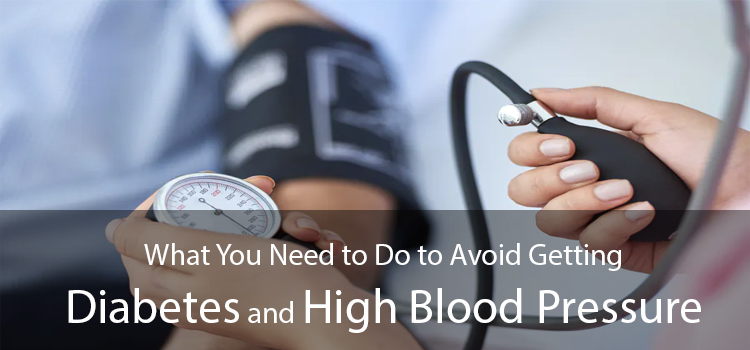Do you know that over 100 million adult Americans are diabetic or have prediabetes! The numbers for people who have high blood pressure are also the same and are on a constant rise. For a while now, researchers and health professionals have been sharing some much simpler and easy ways to reduce the risk of developing Diabetes and High Blood Pressure.
One of these key ways is the act of walking! If you develop the habit of taking 10,000 steps per day, you will meet the standard recommendation by physical fitness experts.
In the past several decades, the benefits of daily exercise, especially walking, have been extensively studied. And the 10,000-plus steps a day formula has proved to be full of amazing health benefits. If walking is not your thing, don’t worry. There are other habits as well, which are effective in lowering your risk for these diseases.
Preventing Diabetes and High Blood Pressure
Here are some quick facts:
- Walking every day can lower your risk of both, high blood pressure and diabetes.
- Researchers have unveiled that these daily steps reduce your stress levels.
- Experts have explained that walking daily bolsters the immune systems.
You don’t have to essentially dedicate hours to go for a walk. Some simpler and informal ways could be walking your dog, walk and chitchat with a friend instead of having lunch together, take the stairs in the office, and so on. You can get creative with your daily walking jaunts.
Habits to Help Avoid High Blood Pressure and Diabetes
Practicing a healthy lifestyle is the key to reducing your risk of falling a victim to many diseases. Including heart disease and types of cancers! Staying physically active will keep your blood pressure and blood sugar in a healthy range. And preventing hypertension will then reduce your risks for heart diseases and strokes.
Let’s talk about all those healthy habits, which will help you achieve an optimal lifestyle:
Tuning Up Your Diet
Americans have a tendency to get consumed by junk and unhealthy food. That’s one of the main reasons why it is one of the most obese nations in the world. This also leads to eating disorders such as binge eating disorder that’s quite common in the United States.
As a general rule, stick to healthy snacks and meals to avoid the escalating level of blood pressure and all its complications. Eating plenty of veggies and fresh fruits will help too. Moreover, choose a variety of foods, which are rich in fiber, potassium, and protein, but low in saturated fat and sodium. Below are four dietary changes, which will largely impact your risk of both health conditions in question.
- Go for whole grains.
- Prefer whole grain products and ditch refined grains and highly processed carbs.
- Take healthy fats.
- Prefer coffee, water, and tea to sugary, fizzy drinks.
- Limit the consumption of red meat.
- Avoid processed meat as much as you can.
- Consume nuts, whole grains, beans, fish, poultry, and so on.
You can even consult a professional nutritionist to help you with a healthy meal diet plan.
Maintain a Healthy Weight
Obesity or being overweight increases your risk of both diabetes and hypertension. So, keep your weight within the healthy range according to your height. That, you can easily calculate by consulting BMI (body mass index). And talk to your healthcare specialist about ways to reach your ideal, healthy weight. This will include regular physical activity and opting for healthy foods.
Obesity can be the single most significant cause of type 2 diabetes. Also, being obese can increase your chances of developing the said disease by 20-40 times. Work on reducing your weight if it is above the healthy weight range.
Get Moving
We cannot emphasize enough the effectiveness of working out for healthy wellbeing. If you want to avoid consuming vitamins for high blood pressure, you need to incorporate some form of physical activity or exercise to keep your weight in check. You will do yourself, your weight, your blood sugar, and your blood pressure levels a favor by developing a habit of working out. You don’t have to essentially hit the gym and do some strenuous form of exercise. From cycling, swimming, and jogging, to yoga, Pilates and Zumba, you can do anything.
The recommendation by health experts is 2 and a half-hour of moderate-intensity workout. That makes about half an hour of workout, 5 days per week! So choose your favorite form of exercise – start from moderate-intensity exercises – and stick with it. Because inactivity is a major cause of diabetes and high blood pressure. Remember, you don’t need to indulge in extensive bouts of hot and sweaty exercise. Choose moderate-intensity exercises.
Quit Smoking
Smoking increases your risk of both the diseases in question. It can also increase your chances of heart strokes and attacks. In addition to that, there are a plethora of health problems, including type 2 diabetes, linked with smoking. If you are not a smoker, great! If you do smoke, work on quitting it. According to an estimate, smokers are 50% likely to become diabetic as compared to non-smokers. If you are chain-smoker, the risk is even higher.
Limit Your Alcohol Consumption
Drinking too much alcohol can increase your blood pressure. Whereas, moderate drinking can reduce the risk of heart diseases and Type 2 diabetes. For men, the definition of moderate alcohol consumption is 2 drinks a day, and for women, it is 1 drink a day.




